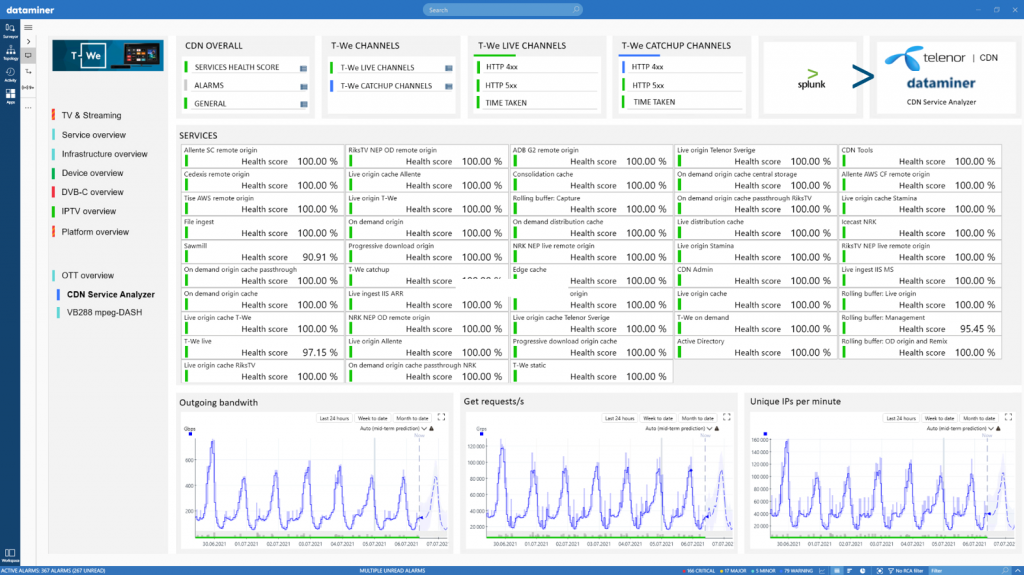Imagine this: It’s been a long working day, and you’re all excited to join the livestream of your favorite band or watch a new movie with your favorite actor that just appeared in the catalog of your streaming service. You lie down on your sofa, and at the press of a button you enjoy all the content you desire, with authentication and billing all processed in the background.
This ultimate end-user convenience, as it is often called, is of course made possible by a reliable data plane (e.g. broadband network) but also a high-performing back-end system. The back end consists of various OSS functions that all need to work together, such as the CRM defining which products a consumer is entitled to, the product catalog, billing, etc.
In addition, there are also one or multiple control plane systems that typically take care of the user service requests (transactions), such as a user requesting a VoD movie, triggering a network DVR recording or initiating a voice call. Naturally, the control planes need to be designed and deployed to manage the scale, peak demand and richness of the offered media services.
If the control plane fails, many or all users may instantly suffer degraded service delivery or outages. This would turn that ultimate convenience into an ultimate disappointment for the customer, and a loss of critical revenue streams for you as a service provider. That is why your back-end platforms are critical for the financial health and stability of your company.
Control planes consist of multiple subsystems – often deployed dynamically on containers to manage peak demand. While different vendors deliver different control planes (media services, targeted advertisement, network recording, etc.), service providers and broadcasters are often challenged to glue all these systems together – using in-house developed configs and scripts – and assign DevOps teams to handle the deployment.
In other words, control planes are often a mix of components acquired off the shelf and developed internally, built to satisfy your exact needs and specifications. In recent times, your on-premises systems are often even complemented with SaaS services, frequently combining different cloud service providers, optimizing for flexibility and cost (multi-cloud).
Without doubt, next to data plane monitoring, monitoring the performance, load and availability of the control plane components ranks high on the priority list. This is why we are presenting control plane monitoring as a specific DataMiner use case.
The DataMiner control plane monitoring solution gathers KPIs for the different subsystems (e.g. session managers, user managers, etc.) that together deliver a specific end-user service. The filtered KPIs from all subsystems that contribute to a specific end-user service are all combined together in a single DataMiner service. As such, DataMiner exposes services, their health states, their historical alarms, and the performance data of all end-user services. Having one DataMiner service for each control plane service makes it extremely convenient for operators to manage, troubleshoot and plan capacity.
It supports e.g. tree view visualization of the dependencies between the different (micro-)services, and offers KPI collection as well as calculation, presentation, trending and monitoring of the health score (KQI). DataMiner monitors your entire ICT stack, from the network and infrastructure layer, with load and resource utilization tracking, to your on-premises and multi-cloud infrastructure.
It is this unified, protocol-agnostic data collection architecture of DataMiner that assures coverage for your entire control plane, regardless of technology, vendor or implementation. With the capability to extend this monitoring to the data plane option, it provides you with a fully integrated setup for both the control and data plane.


Nice one , do we have this option on Ver 9.6.1839.106 ?
Hi Divagar,
Thank you very much for your query, I will contact you for more details.